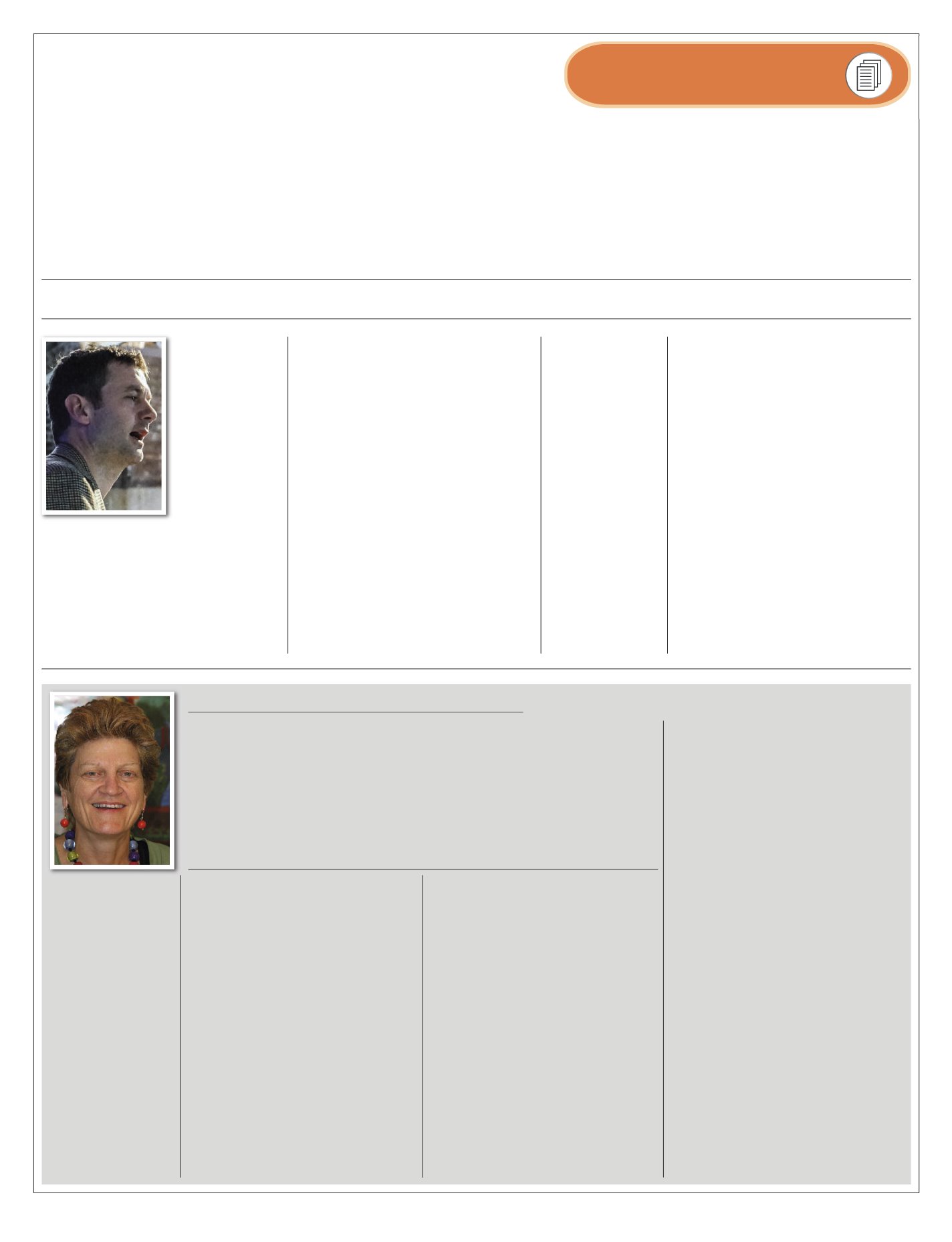
February 2016 |
drinkanddrugsnews
| 17
Read the full stories and more:
IT IS RECOGNISED
that controlled
substances are indispensable for the relief
of severe pain and suffering. For the most
part, the richest 20 per cent of the world’s
population has well-managed access to
controlled medicines for the treatment of
pain. However, in stark contrast, the poorest
80 per cent has almost no access at all.
International Doctors for Healthier Drug
Policies (IDHDP) has launched a campaign,
‘Striving for equity in the treatment of
severe pain’, with the purpose of
highlighting the dreadful inequity that
allows 80 per cent of the world’s population
to suffer unspeakable pain while dying of
chronic conditions, or after suffering injury.
This, while the richest 20 per cent take it for
granted that controlled medicines will be
readily available in such circumstances.
Regulations to prevent the use of drugs
like heroin have unnecessarily created an
atmosphere of fear when it comes to
prescribing what are in essence similar
drugs for the treatment of pain. There is no
reason why it is not possible to reduce the
harm created by the misuse of drugs like
heroin, while at the same time ensuring
that drugs like morphine are readily
available to be prescribed by doctors for the
treatment of severe pain irrespective of
which country the patient lives.
It will also highlight how information
and training are so badly needed in many
countries. Even in countries where effort
has been made to address the excessive red
tape to prescribe controlled medicines
there are still significant training needs for
medical staff, particularly in the area of
effective palliative care. Perhaps of greatest
importance is a global public information
programme on the basic human right of
access to medicine to alleviate otherwise
intolerable pain.
‘Fear rules us. It robs us of our reason,’
says Dr M R Rajagopal, chairman of the
Pallium India charitable trust.
‘Doctors, drug regulators and legislators
are in shocked fear when they think of the
possibility of their offspring getting
addicted to a drug. Because they do not
stop to learn enough, they put in
unrealistic restrictions. The result – failure
of the purpose, and needless pain and
suffering, the extent of which is beyond
our power of imagination.’
‘I hate to imagine what cancer pain is
like, I have not experienced it,’ adds Dr
Zipporah Ali, executive director of Kenya
Hospices and Palliative Care Association.
‘However, I have witnessed cancer patients
who have no access to appropriate pain
medication. We are living in a time where
we talk about best standards of care, of
human rights, equal opportunities. Let us
join our efforts to ensure opioids are
available to relive pain not just in the
developed world, but globally. Pain relief is
a human right.’
Dr Chris Ford is clinical director of IDHDP.
A painful truth
‘The richest
20 per cent
take it for
granted
that
controlled
medicines
will be
readily
available...’
from our foreign correspondent
THE SCOTTISH
DRUGS FORUM
(SDF) watered the
seeds of take-home
naloxone and it
allowed us to kick-
start the
programme in
Northern Ireland.
Before that we had
no naloxone, and no
sight of it.
People are dying
– especially poor groups, people in poverty,
and drug-related deaths are concentrated in
these groups. People who need naloxone are
likely to be people who are most disaffected.
They’re not hard to reach – more easy to
ignore for far too long.
Some of the action involved aggressive
campaigning. I was a social worker – and that
involved activism. I got active and aggressive.
Service user activists and social workers
pushed for us to be able to give out naloxone.
The Council for the Homeless in Northern
Ireland is moving towards training for the
trainers in naloxone. We developed a lot of
partnerships with all stakeholders, including
the Housing Executive, voluntary sector
agencies, the ambulance service, and the
police, and looked at the viability, efficacy, and
effectiveness of naloxone. We sometimes
arrive late on substitute prescribing etc – but
we’ve done well on this.
People are now offered naloxone at a very
early part of their treatment. We have posters
and leaflets that reinforce the messages and
push further for it. Take-home naloxone
programmes need courageous people with
credibility; people who are experts in their area.
There are opportunities now – the law
change has let us expand. Outreach services
and hostels can now give it out, as can
pharmacies, alongside needle and syringe
distribution.
Overdoses are down – we had seen them
rise and rise over the decade, so to see a
significant drop last year was a great thing. I
can’t say that it was specifically naloxone –
only time will tell. The Public Health Agency
for Northern Ireland is going to devolve
funding to local trusts. But because it’s in their
contracts, it will be difficult for them to step
away from naloxone.
Buff [Iain Cameron] and I decided we
wanted to support take-home naloxone, so we
developed an app and funding followed. We
want to do an update, if we find the funding.
You have loads of credible and courageous
people in this country – get them involved.
Chris Rintoul is lead trainer for Street Rx in
Northern Ireland. He spoke at the HIT Hot
Topics conference in Liverpool
Reach out !
Chris Rintoul
reports positive results from a Northern Ireland naloxone programme
‘You have
loads of
credible
and
courageous
people
in this
country –
get them
involved.’
first person
Photo by Nigel Brunsdon
Why should fear of drugs like heroin leave
80 per cent of the world’s population suffering
unspeakable pain, asks
Dr Chris Ford


